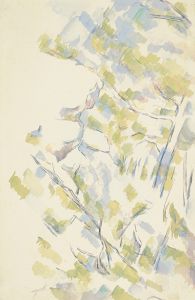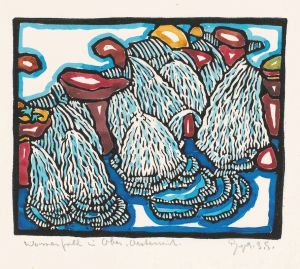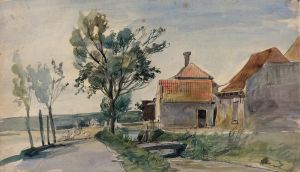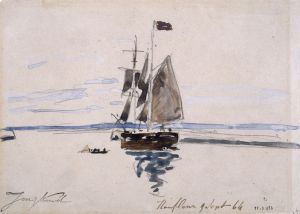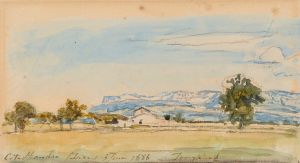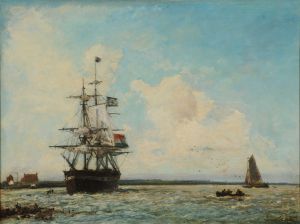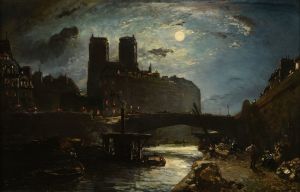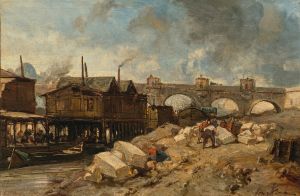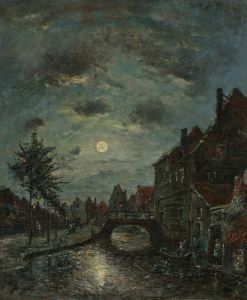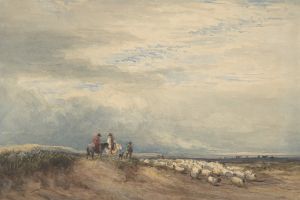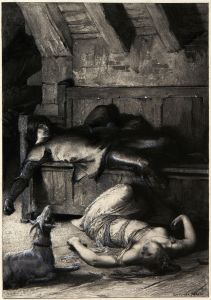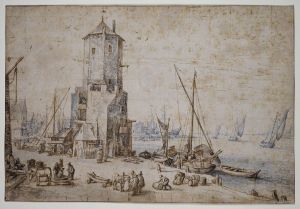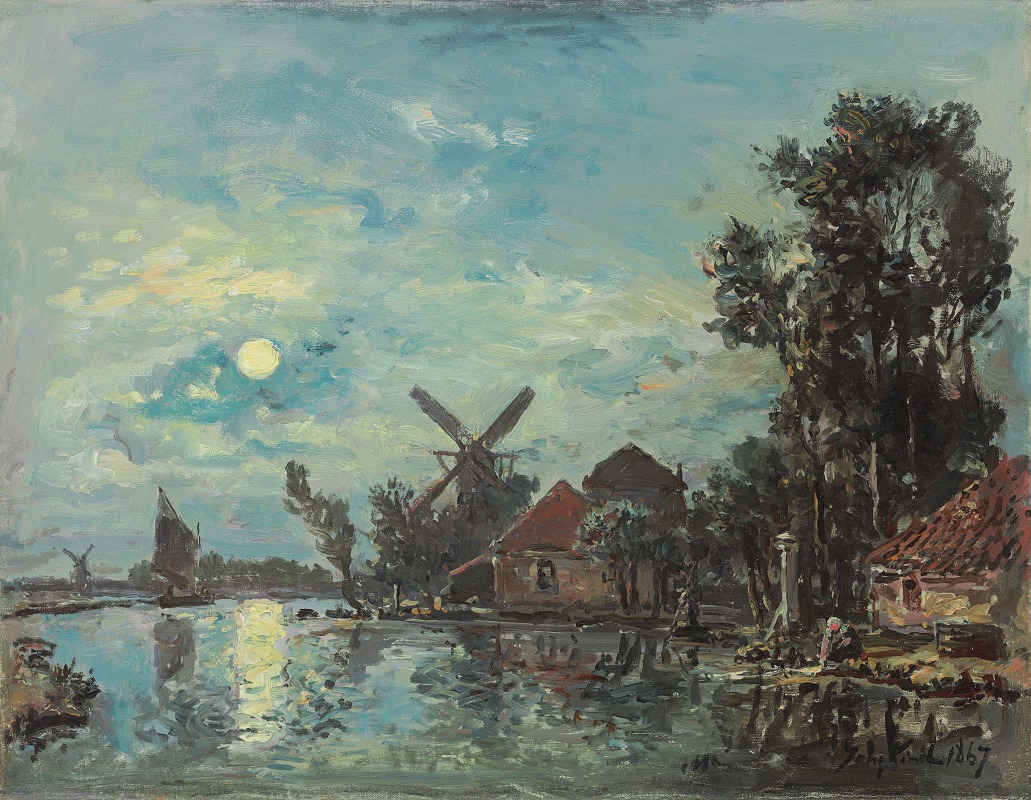
Effet de lune sur l’estuaire, Hollande
A hand-painted replica of Johan Barthold Jongkind’s masterpiece Effet de lune sur l’estuaire, Hollande, meticulously crafted by professional artists to capture the true essence of the original. Each piece is created with museum-quality canvas and rare mineral pigments, carefully painted by experienced artists with delicate brushstrokes and rich, layered colors to perfectly recreate the texture of the original artwork. Unlike machine-printed reproductions, this hand-painted version brings the painting to life, infused with the artist’s emotions and skill in every stroke. Whether for personal collection or home decoration, it instantly elevates the artistic atmosphere of any space.
Effet de lune sur l’estuaire, Hollande is a painting by the Dutch artist Johan Barthold Jongkind, a prominent figure in the development of landscape painting in the 19th century. Jongkind, born in 1819 in the Netherlands, is often associated with the Impressionist movement, although he is technically considered a precursor to the style. His work is characterized by a keen observation of light and atmosphere, which is evident in this particular painting.
The title of the painting, translated to "Moonlight Effect on the Estuary, Holland," suggests a focus on the interplay between moonlight and water, a common theme in Jongkind's oeuvre. Jongkind was known for his ability to capture the transient effects of light on the landscape, and this painting is a testament to his skill in rendering such scenes with a sense of immediacy and emotion.
Jongkind's technique often involved the use of loose brushwork and a light palette, which allowed him to convey the subtle shifts in light and color that occur in nature. In Effet de lune sur l’estuaire, Hollande, these techniques would likely be employed to depict the serene and reflective qualities of moonlit water. His ability to portray the nuances of light was influential to many Impressionist painters, including Claude Monet, who considered Jongkind a mentor.
The setting of the painting, an estuary in Holland, reflects Jongkind's Dutch heritage and his affinity for maritime subjects. Estuaries, where rivers meet the sea, provide a dynamic environment for exploring the effects of light and atmosphere, making them an ideal subject for Jongkind's artistic interests. The choice of a moonlit scene adds a layer of tranquility and mystery, inviting viewers to contemplate the natural beauty of the Dutch landscape.
Jongkind's work was well-regarded during his lifetime, and he exhibited regularly in Paris, where he spent much of his career. His paintings were appreciated for their innovative approach to landscape painting, which paved the way for the Impressionists. Effet de lune sur l’estuaire, Hollande exemplifies the qualities that made Jongkind's work stand out: a dedication to capturing the essence of a moment and a mastery of light and color.
While specific details about the creation and current location of Effet de lune sur l’estuaire, Hollande are not widely documented, the painting remains an important example of Jongkind's contribution to art history. His influence on the Impressionist movement and his ability to capture the ephemeral qualities of nature continue to be celebrated by art historians and enthusiasts alike.
Jongkind passed away in 1891, but his legacy lives on through his paintings, which continue to inspire and captivate audiences with their beauty and technical prowess. Effet de lune sur l’estuaire, Hollande is a testament to his skill and vision as an artist, capturing the serene beauty of a moonlit Dutch landscape with a sensitivity that resonates with viewers to this day.





